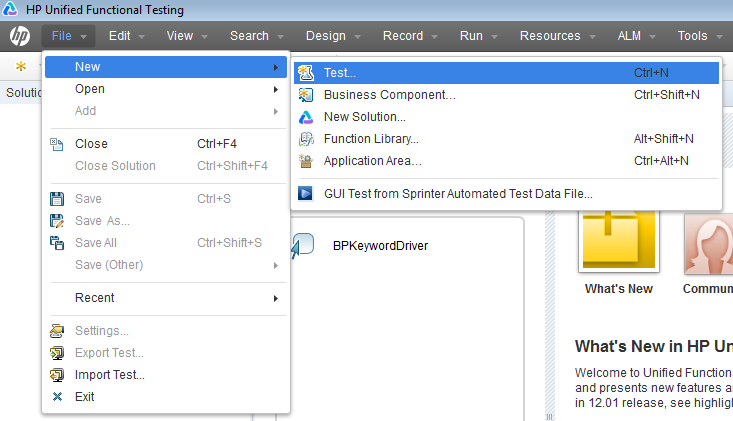

We create the Object Repository (OR) using either the UFT’s built-in facility- Object Repository Manager (which handles shared objects that can be used across multiple test scripts) or by using excel to define the objects and its properties.Īfter learning the objects, scripting can be easily done by pulling the objects (either by drag-and-drop or by writing the object hierarchy explicitly) into the expert view of UFT, hence creating the script. When an application is being automated by UFT, we first learn the application through its objects. UFT has Object Repository which makes it easier to modify object properties.Īs depicted in above figure, under testing process of UFT, there are just 3 stages which are pretty simple for any new learner to understand and implement: Object properties may keep changing and maintaining the automation code turns to be a nightmare. Automation code maintenance is a real challenge when the AUT is being developed incrementally. And, it comes with an in-built IDE which is easy to use.Ħ. UFT uses VBScript which is easier to learn for beginners. Manual testers find Excel as the most effective, simple and efficient method to provide input data.ĥ. Microsoft Excel is used by business people and manual testers to provide input data, to control execution flow and to log execution results. There’s a native support for automating Microsoft Excel and Outlook through COM and VBScript. It takes care of input / output parameters, test iterations, components and test execution thereby reducing the effort to write code for these activities.Ĥ. The Business Process Testing framework provided by QTP and QC is an excellent framework. UFT integrates well with its Test Management tool: HP Quality Centre.



Publishers of commercial license software are bound to provide technical support and have SLA to resolve issues, whereas majority of the open source applications have only community support.ģ. NET, Java, Web Services, Windows and Web.Ģ. Few open source automation tools like Selenium targets only Web and Mobile platforms whereas QTP provides support for many platforms including SAP. But, there are convincing answers in favor of UFT. Yes, this is absolutely a valid question. The first question that arises in mind is ‘Why use UFT for automation when there are so many cheaper or free tools available online?’. The trial version works on a system where UFT demo version is not installed before. Anyone interested in learning UFT, can download the trial version which can be used up-to 60 days, after which a license is required which can be bought from HP site. It is capable of intelligent test automation for web, mobile, API, hybrid, RPA and enterprise Apps. It is a functional test automation software. UFT (Unified Functional Testing) is widely used by many IT MNC’s for automation testing purpose.


 0 kommentar(er)
0 kommentar(er)
